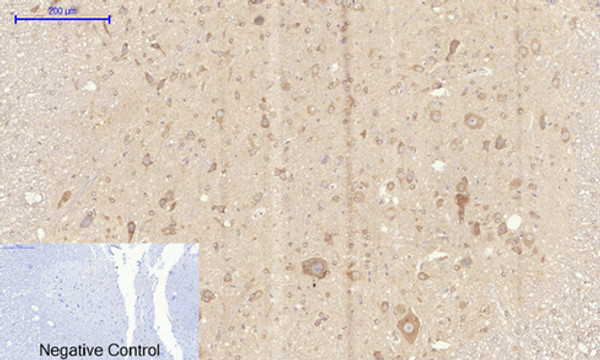| Post Translational Modifications | Autophosphorylated on serine and threonine residues. Cleaved by caspase-3 during apoptosis. This leads to constitutive activation of the kinase and membrane blebbing. |
| Function | Protein kinase which is a key regulator of the actin cytoskeleton and cell polarity. Involved in regulation of smooth muscle contraction, actin cytoskeleton organization, stress fiber and focal adhesion formation, neurite retraction, cell adhesion and motility via phosphorylation of DAPK3, GFAP, LIMK1, LIMK2, MYL9/MLC2, TPPP, PFN1 and PPP1R12A. Phosphorylates FHOD1 and acts synergistically with it to promote SRC-dependent non-apoptotic plasma membrane blebbing. Phosphorylates JIP3 and regulates the recruitment of JNK to JIP3 upon UVB-induced stress. Acts as a suppressor of inflammatory cell migration by regulating PTEN phosphorylation and stability. Acts as a negative regulator of VEGF-induced angiogenic endothelial cell activation. Required for centrosome positioning and centrosome-dependent exit from mitosis. Plays a role in terminal erythroid differentiation. Inhibits podocyte motility via regulation of actin cytoskeletal dynamics and phosphorylation of CFL1. Promotes keratinocyte terminal differentiation. Involved in osteoblast compaction through the fibronectin fibrillogenesis cell-mediated matrix assembly process, essential for osteoblast mineralization. May regulate closure of the eyelids and ventral body wall by inducing the assembly of actomyosin bundles. |
| Protein Name | Rho-Associated Protein Kinase 1Renal Carcinoma Antigen Ny-Ren-35Rho-Associated - Coiled-Coil-Containing Protein Kinase 1Rho-Associated - Coiled-Coil-Containing Protein Kinase IRock-IP160 Rock-1P160rock |
| Database Links | Reactome: R-HSA-111465Reactome: R-HSA-3928662Reactome: R-HSA-3928663Reactome: R-HSA-416482Reactome: R-HSA-416572Reactome: R-HSA-4420097Reactome: R-HSA-5627117Reactome: R-HSA-6798695Reactome: R-HSA-8980692Reactome: R-HSA-9013026Reactome: R-HSA-9013106Reactome: R-HSA-9013407Reactome: R-HSA-9013422Reactome: R-HSA-9679191Reactome: R-HSA-9696264 |
| Cellular Localisation | CytoplasmCytoskeletonMicrotubule Organizing CenterCentrosomeCentrioleGolgi Apparatus MembranePeripheral Membrane ProteinCell ProjectionBlebCell MembraneLamellipodiumRuffleA Small Proportion Is Associated With Golgi MembranesAssociated With The Mother Centriole And An Intercentriolar LinkerColocalizes With Itgb1bp1 And Itgb1 At The Cell Membrane Predominantly In Lamellipodia And Membrane RufflesBut Also In Retraction FibersLocalizes At The Cell Membrane In An Itgb1bp1-Dependent Manner |
| Alternative Antibody Names | Anti-Rho-Associated Protein Kinase 1 antibodyAnti-Renal Carcinoma Antigen Ny-Ren-35 antibodyAnti-Rho-Associated - Coiled-Coil-Containing Protein Kinase 1 antibodyAnti-Rho-Associated - Coiled-Coil-Containing Protein Kinase I antibodyAnti-Rock-I antibodyAnti-P160 Rock-1 antibodyAnti-P160rock antibodyAnti-ROCK1 antibody |
Information sourced from Uniprot.org


































